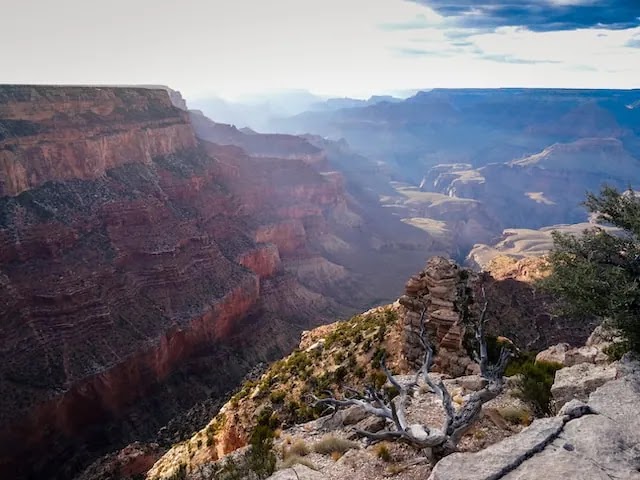
There is important information about the Grand Canyon National Park to know. Millions of years ago, the world was not like this.
The towering peaks now stand on the earth’s surface, once may have been rivers. Or where billions of species of animals now swim in reservoirs, there were once vast arid deserts.
There is a canyon extending for about 446 kilometers around the two banks of the Colorado River. It is in the heart of Arizona, which has taken formation by billions of years of erosion.

Home to Native Americans for hundreds of years, the gorge is now known as the Grand Canyon. It became one of nature’s wonders when European explorers first saw it in the 16th century.
This gorge has satisfied the eye hunger of eager tourists who have visited it. This place was once a storm in the cup of tea of researchers.
How exactly are these geographical features created in the flow of a river that is only 100 meters long? This question has puzzled the best of history’s curious minds. But we don’t have to go far to find the answer.
4 Information about The Grand Canyon National Park
The Grand Canyon is a unique place in the world, without any doubt. Many people want to know many things about this place in the United States of America. It is a simple matter. This place has everything to raise interest among people.
1. What is the Grand Canyon?
It is one of the canyons of the world and stands on both sides of the Colorado River. It is on the northwest side of Arizona, bordering Nevada. It is about 446 km long and about 29 km wide.
The average depth of this wonder is about one mile (1.8 km). According to geologists, the flow of the Colorado River over millions of years formed it.
It is the fourth-largest canyon in the world in size and volume. But it is the most famous wonder in the world, with about 6.2 million tourists walking every year.
2. Gorge
The area has become a national park. The climate of the valley is somewhat dry. The arid environment of the park is home to about 355 species of birds and 89 species of mammals.
It is also home to 47 species of reptiles, nine species of amphibians, and 17 species of fish. Its plains are somewhat desert, and the higher elevations have small to medium-sized forests.
About one and a half thousand species of plants are available in this forest. This area has two regions – the North Rim and the South Rim. The South Rim is open to visitors throughout the year.

This rim of the canyon region also has airport and rail connectivity. About 90% of the visitors come to the South Rim, which is close to other Arizona cities, Las Vegas, Nev, etc.
Although somewhat inaccessible, the North Rim is the first choice for adventurers. The most beautiful views of the gorge are visible from here.
The distance between the two rims is about 16 km. Every year avid hikers trek through the canyon’s remote areas on foot.
3. River-Rock Battle
Geologists believe that where it stands today, there was once no existence. There is still a debate among scientists about how long ago this ‘once’ happened.
Many say 70 million years ago, and many say the period is 3.5 million years. There existed a vast plain. It was when the earth was changing its shape and transforming into the green land of today.
The Colorado River flowed over it, as it does today. At some point, the surface changes its form. Along the course of the river, the Kaibab Plateau began to form.
Due to the formation of this plateau, the river flow became obstructed. Obedient to the laws of nature, Colorado changed its course. Now Colorado’s course split into two.
One part flowed into the Gulf of Mexico. Another part continued to dominate the plateau inhabited area at its own pace. The lakes were born at several places with the change of the course of the river.
The lake created by the water accumulation is the most fascinating of these. This lake is in the eastern part of the river. It took its formation about 12 million years ago, and it is now called Bidahochi.
Day after day, the Colorado River erodes the plateau rock with its current. It undergoes various reactions with the river water and the chemical in it. As a result, this erosion begins.
The rocks beneath the plateau have weakened. It happened because of hundreds of thousands of years of erosion. Now the Colorado current becomes strong from the rock resistance.
As a result, the river water started flowing through the rocks of the plateau. The Colorado River became able to rejoin the tributaries that flowed along its old course.
After the two branches converged, Colorado’s headwaters rose. Even a large amount of water from Lake Bidahochee flows into the bosom of Colorado.
The rocks of the deep Colorado Plateau continue to break up. And from that rubble, a process of many years builds up a magnificent canyon. That is a brief history of the creation of this wonder.
Besides, various natural changes, weather, and geographical events have played a role. This role is responsible for building this gorge for millions of years.
The oldest rock at the foot of the gorge is the Vishnu Rock. It is about 1.7 billion years old. But the youngest rocks are available at the top and are about 270 million years old.
4. How People Discovered The Grand Canyon
Born from the battle of Colorado and the Kaibab, humans arrived in this vast canyon 12,000 years ago. At that time, the ice age on earth was almost at the end.
People started building houses in the remote area of the gorge. At that time, animals called Shasta sloths used to roam in this area. They lived by hunting those animals.
They also started farming on a limited scale at the foot of the gorge. At certain times of the year, they begin to harvest crops. They started to supply them to the caves discovered on the hillsides.
The Pueblo, Paiute, Navajo, Zuni, and Hopi are among the indigenous communities. They have settled in this place since the Ice Age. But, the Havasupai people who live there claim it as their ancestral home.
They have been living here for about 800 years. Everyone knows Havasupai village as Supai Village. One of the most remote regions in the United States is the village of Supai.

There is no mobile network here, even in the era of information technology of the 21st century. Locals still communicate by delivering mail on mules.
Spanish explorer García López de Cardenas was the first person outside of Native Americans to this place. In 1540 he was the first white man to discover this gorge.
About 300 years after its discovery, a group of miners settled in 1880 in search of copper mines. The conservation of forest resources here started in 1893 under the government.
It happened not to destroy the rare natural features like this gorge. Around 1901, It became a tourist industry. It became a tourist attraction from all over the world.
In 1903 then President Franklin D. Roosevelt annexed the canyon to the government. In 1919, another president, Woodrow Wilson, made it a national park.
Conclusion
People have the curiosity to know information about the Grand Canyon National Park. We have already known that this place is the wonder of nature.
Many adventurous people from different parts of the world love to visit this natural wonder every year. It has many unique things to offer. Many wild animals live there.
- Koh Kong Island: A Beautiful Place of Cambodia
- The Largest Mountain in Africa: Mount Kilimanjaro
- Lac de Gafsa: A Mysterious Lake in Tunisian Desert

A Bangladeshi entrepreneur. A person who loves nature, a web developer, and the founder of Srigal and Nehrin.